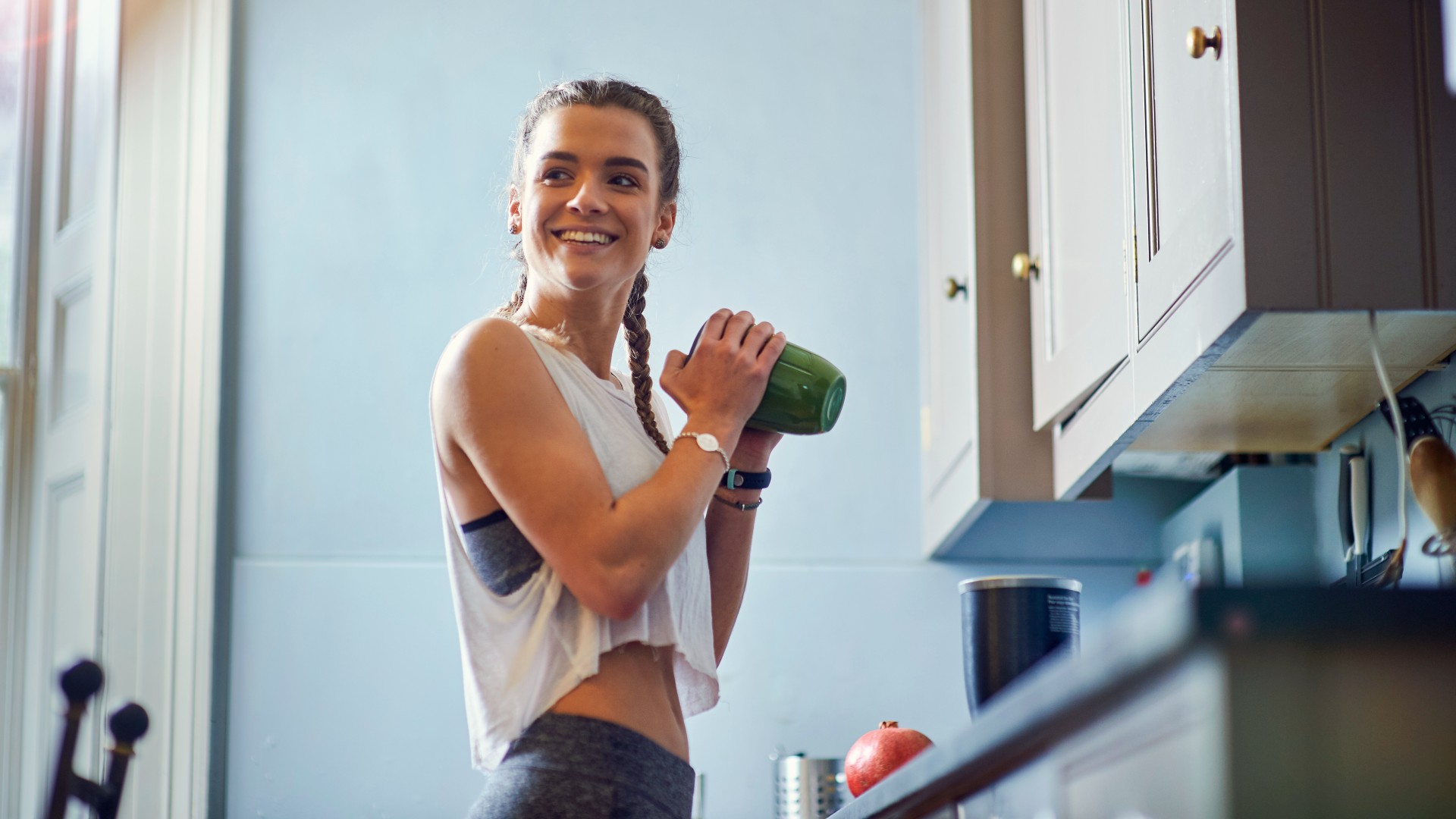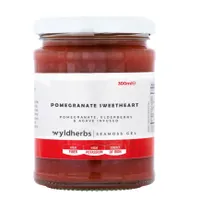
Touted as “the plant-powered rival to Collagen” and loved by celebrities like Bella Hadid and Kim K, sea moss is having its moment in the spotlight as a potent superfood that can supercharge your health and wellbeing. But is it fad or fact? I decided to take a tablespoon every day and find out for myself.
The benefits of sea moss are said to include boosting skin health, immunity, gut health and thyroid function while reducing inflammation. It’s a nutrient-dense bomb of beauty benefits that people are using as a 100% natural skincare supplement — no tablets, capsules, or powders in sight.
Could sea moss transform my skin? Here’s what I really think.
What is sea moss?

Sea moss is part of the red algae family found in places like the Caribbean. Its scientific name is Chondrus crispus, which I (personally) think is catchier for the market, and incidentally sounds like either a character from the Harry Potter franchise or my future rap name.
It’s also low in calories and fat and is packed full of vitamins, minerals, antioxidants and iodine.
What does sea moss do in your body?
According to Wyld Herbs (more on that shortly), sea moss promotes natural collagen production to improve skin health, fight inflammation and boost immunity. Its fiber and live bacteria content can also support optimal gut health.
Sea moss contains iodine, which supports thyroid and hormone function; however, it’s worth consulting your physician first if you have a thyroid condition and use medication already.
Get instant access to breaking news, the hottest reviews, great deals and helpful tips.
Then there’s the iron content, which can help battle tiredness and fatigue and boost energy, and nutrients like calcium and phosphorus are also present. Although your diet should ideally contain all the vitamins and minerals you need, sea moss is a great supplement to include to give you that little extra boost.
Prices start from £15, depending on the product, and can be shipped internationally, although you may have to pay extra for imports. You can also mix and match flavor bundles before checkout.
A common method for consuming sea moss is a gel, which is what I’ve been using. I used Wyld Herbs, which offers sea moss gel in a range of flavors such as turmeric, raw honey (sourced from local beekeepers) and strawberry (my favorite — it tastes like a jam tart!).
There are other ways to consume, but I found this the easiest, as I could just swipe a tablespoon straight from the jar. I also sometimes added it to smoothies, shakes, or my go-to oats recipe.
Wyld Herbs works with female farmers and wild forages their sea moss from protected Caribbean waters. You can even apply it topically to your face twice per week as a mask if you prefer.
Should you take sea moss every day?
Sea moss is high in iodine, so intake should be discussed with your physician if you have a thyroid condition and use medication. General guidelines suggest that one to two tablespoons of sea moss gel consumed daily is safe for most people.
The British Dietetic Association doesn’t recommend consuming brown seaweed or kelp every day, though, and warns against using seaweed or kelp supplements as iodine levels can vary.
You should also avoid sea moss gels if you are pregnant or have a seafood or shellfish allergy.
I took sea moss gel every day — here’s my honest verdict

First, the sea moss gel I used tasted delicious, so I consumed it each morning straight from the jar or added it to my smoothies or oats, opting for one heaped tablespoon. I do have a thyroid condition, but didn’t experience any adverse effects using this amount. However, always listen to your body, and as mentioned before, ask your physician if you’re unsure.
I’m going to say straight up that I’ve been using this product for more than a month, and I haven’t noticed any physical or mental benefits so far. That isn’t to say that consuming extra vitamins and minerals isn’t doing my body good, but I haven’t noticed a change to my skin or physical well-being that I can chalk up to sea moss.
I’m enjoying the product, and it’s a great low-fat and low-calorie topper for yoghurts, oats, or smoothies — or even just straight from the jar when you’re feeling peckish. But I wouldn’t stray from a balanced diet or expect a wonder cure for your skin, gut and well-being needs.
Further research is needed, and I’ll be reporting back if I notice any changes to my health over the coming months.
What does the research say?
Although sea moss is related to seaweed, the majority of research supports the health benefits of seaweed as opposed to sea moss specifically. The benefits are reported to be similar, but the research is (at this stage) limited.
A 2021 study suggests marine seaweeds contain “bioactive components that promote a healthy diet,” listing properties like anticancer, antiviral, antihypertensive, antiinflammatory, neuroprotective and antifungal — to name a few. However, it adds that seaweeds can accumulate heavy metals and minerals, so consumption should not exceed the recommended daily allowance (150 mcg for adults).
A risk assessment published by Environmental Science and Pollution Research suggests 4g per day of dehydrated Irish moss seaweeds contributes “greatly” toward the recommended daily allowance for iodine in children (roughly 25.7%).
A study published in BMC Complementary and Alternative Medicine on Chondrus crispus (sea moss) found that it could have prebiotic effects, improving gut health and immune modulation. However, the research was conducted on animals (rats) and not on humans. It's promising, at least, but a gamechanger in tablespoon form? Not yet.
More from Tom's Guide
- Forget running and swimming — study finds this sport adds 10 years to your life
- I review running watches and these are my top 3 suggestions for most people
- Over 60? Forget running and swimming — these 5 bodyweight exercises help strengthen your entire body, using just a chair

Sam Hopes is a level 3 qualified trainer, a level 2 Reiki practitioner and fitness editor at Tom's Guide. She is also currently undertaking her Yoga For Athletes training course.
Sam has written for various fitness brands and websites over the years and has experience across brands at Future, such as Live Science, Fit&Well, Coach, and T3.
Having coached at fitness studios like F45 and Virgin Active and personal trained, Sam now primarily teaches outdoor bootcamps, bodyweight, calisthenics and kettlebells.
She also coaches mobility and flexibility classes several times a week and believes that true strength comes from a holistic approach to training your body.
Sam has completed two mixed doubles Hyrox competitions in London and the Netherlands and finished her first doubles attempt in 1:11.
You must confirm your public display name before commenting
Please logout and then login again, you will then be prompted to enter your display name.

